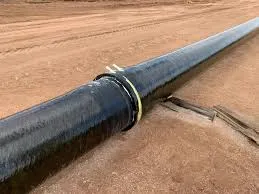
-
 Afrikaans
Afrikaans -
 Albanian
Albanian -
 Amharic
Amharic -
 Arabic
Arabic -
 Armenian
Armenian -
 Azerbaijani
Azerbaijani -
 Basque
Basque -
 Belarusian
Belarusian -
 Bengali
Bengali -
 Bosnian
Bosnian -
 Bulgarian
Bulgarian -
 Catalan
Catalan -
 Cebuano
Cebuano -
 China
China -
 China (Taiwan)
China (Taiwan) -
 Corsican
Corsican -
 Croatian
Croatian -
 Czech
Czech -
 Danish
Danish -
 Dutch
Dutch -
 English
English -
 Esperanto
Esperanto -
 Estonian
Estonian -
 Finnish
Finnish -
 French
French -
 Frisian
Frisian -
 Galician
Galician -
 Georgian
Georgian -
 German
German -
 Greek
Greek -
 Gujarati
Gujarati -
 Haitian Creole
Haitian Creole -
 hausa
hausa -
 hawaiian
hawaiian -
 Hebrew
Hebrew -
 Hindi
Hindi -
 Miao
Miao -
 Hungarian
Hungarian -
 Icelandic
Icelandic -
 igbo
igbo -
 Indonesian
Indonesian -
 irish
irish -
 Italian
Italian -
 Japanese
Japanese -
 Javanese
Javanese -
 Kannada
Kannada -
 kazakh
kazakh -
 Khmer
Khmer -
 Rwandese
Rwandese -
 Korean
Korean -
 Kurdish
Kurdish -
 Kyrgyz
Kyrgyz -
 Lao
Lao -
 Latin
Latin -
 Latvian
Latvian -
 Lithuanian
Lithuanian -
 Luxembourgish
Luxembourgish -
 Macedonian
Macedonian -
 Malgashi
Malgashi -
 Malay
Malay -
 Malayalam
Malayalam -
 Maltese
Maltese -
 Maori
Maori -
 Marathi
Marathi -
 Mongolian
Mongolian -
 Myanmar
Myanmar -
 Nepali
Nepali -
 Norwegian
Norwegian -
 Norwegian
Norwegian -
 Occitan
Occitan -
 Pashto
Pashto -
 Persian
Persian -
 Polish
Polish -
 Portuguese
Portuguese -
 Punjabi
Punjabi -
 Romanian
Romanian -
 Russian
Russian -
 Samoan
Samoan -
 Scottish Gaelic
Scottish Gaelic -
 Serbian
Serbian -
 Sesotho
Sesotho -
 Shona
Shona -
 Sindhi
Sindhi -
 Sinhala
Sinhala -
 Slovak
Slovak -
 Slovenian
Slovenian -
 Somali
Somali -
 Spanish
Spanish -
 Sundanese
Sundanese -
 Swahili
Swahili -
 Swedish
Swedish -
 Tagalog
Tagalog -
 Tajik
Tajik -
 Tamil
Tamil -
 Tatar
Tatar -
 Telugu
Telugu -
 Thai
Thai -
 Turkish
Turkish -
 Turkmen
Turkmen -
 Ukrainian
Ukrainian -
 Urdu
Urdu -
 Uighur
Uighur -
 Uzbek
Uzbek -
 Vietnamese
Vietnamese -
 Welsh
Welsh -
 Bantu
Bantu -
 Yiddish
Yiddish -
 Yoruba
Yoruba -
 Zulu
Zulu
fiberglass handrail
The Benefits and Applications of Fiberglass Handrails
In recent years, the construction and architectural industries have increasingly turned to fiberglass handrails for various applications. These innovative structures offer a blend of durability, aesthetic appeal, and low maintenance, making them a preferred choice across many sectors.
First and foremost, fiberglass handrails are renowned for their durability. Unlike traditional materials such as wood or metal, fiberglass is resistant to corrosion, rust, and decay. This inherent resilience is particularly advantageous in environments where exposure to moisture, chemicals, or harsh weather conditions is common. For instance, in coastal areas where saltwater can rapidly degrade metal components, fiberglass handrails remain unaffected, ensuring both safety and longevity.
Fiberglass handrails also showcase impressive strength. Made from a composite material that combines glass fibers with resin, these handrails can withstand substantial impacts and loads without compromising structural integrity. This characteristic is crucial in public spaces, such as staircases, bridges, and walkways, where safety is paramount. The ability of fiberglass to retain its form under heavy stress translates to fewer repairs and replacements over time, resulting in cost savings for property owners.
fiberglass handrail

A significant advantage of fiberglass is its versatility in design. Available in a plethora of colors and finishes, fiberglass handrails can be customized to complement various architectural styles and surroundings. Whether you are aiming for a sleek modern look or a more traditional appearance, fiberglass can be molded and finished to meet desired aesthetic specifications. This adaptability allows architects and designers to create cohesive and visually appealing environments that can enhance the overall appeal of a project.
Additionally, fiberglass handrails are relatively lightweight compared to alternative materials. This attribute simplifies the installation process, allowing for quicker and more efficient setups. Light yet robust, fiberglass can be maneuvered with ease during installation, reducing the labor costs associated with heavier materials. The installation process is further expedited by the fact that fiberglass components often come pre-assembled or can be cut on-site to fit specific dimensions.
Moreover, the low maintenance requirement of fiberglass handrails adds to their appeal. Unlike wood, which may need regular painting or sealing to prevent decay, or metal, which can require treatment to avoid rusting, fiberglass handrails typically only need occasional cleaning. This quality makes them a smarter choice for high-traffic areas where upkeep can become tedious and costly.
In conclusion, fiberglass handrails represent an excellent option for those seeking a combination of aesthetics, durability, and low maintenance. Their strength, versatility in design, and resistance to the elements make them suitable for a variety of applications, from residential properties to commercial buildings and public spaces. As the demand for reliable and visually appealing construction materials continues to grow, fiberglass handrails firmly establish themselves as a forward-thinking solution for modern architecture and safety requirements.









